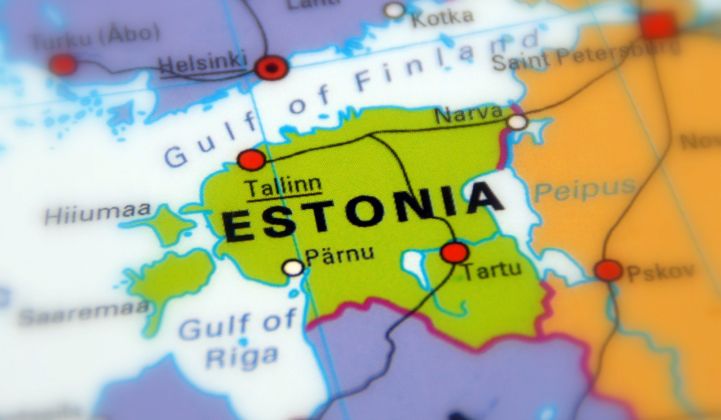WePower has tokenized a year’s worth of Estonian grid data, marking a world first for energy blockchain technology.
The Lithuanian firm said a pilot to put all consumption and production data from Estonian transmission system operator Elering onto blockchain is part of “a groundbreaking collaboration” between the two organizations.
The hourly data from 700,000 households was aggregated by postal code, per hour, to reduce it to a manageable size, according to a technical report on the project.
WePower figured its Ethereum-based blockchain architecture would need at least 15 seconds to write each block of 200 data points.
This meant the raw Estonian data, comprising more than 6 trillion items, would have taken 14 years and around €210 million (USD $239 million) to put onto blockchain, WePower calculated.
WePower eventually uploaded 26,000 hours and 24 terawatt-hours of aggregated production and consumption data to blockchain, and turned it into 39 billion smart energy tokens.
Each token is essentially a digital self-settling power-purchase contract representing one kilowatt-hour of power. The tokens are tradeable and can be sold into the local energy wholesale market by linking the digital contracts with power grid data on the blockchain.
The pilot is said to have been the largest of its kind in the world.
“Projects of this scale and ambition haven’t been attempted before, in part because of the complexity involved but also because energy data is highly sensitive,” said Kaspar Kaarlep, WePower’s chief technology officer, in a press release.
“The project will deepen our understanding of blockchain as a means to share data, paving the way for much-needed innovation in the energy industry,” he said.
Estonia was a prime candidate for energy data tokenization because it has 100 percent smart meter coverage, WePower said. Elering also keeps its smart meter data on a single platform, called Estfeed, which is able to provide hourly production updates to WePower.
The pilot was a major test for Ethereum, the favored blockchain technology for energy applications today. WePower was able to demonstrate that Ethereum could deal with contracts with multi-year terms.
Elsewhere, though, WePower came up against shortcomings with blockchain as a medium for energy trading.
For example, to avoid paying excessive fees to Ethereum for the blockchain platform, WePower was forced to accept delays to transaction times during periods of high mining demand.
As a result, nearly 28 percent of transactions took longer than 10 minutes and almost 9 percent took longer than an hour.
The balance between cost and transaction confirmation times “has to be considered continuously” while communicating with the blockchain, WePower said.
“While Ethereum is currently one of the most mature blockchain solutions supporting smart contracts, a fully decentralized application for large-scale autonomous usage is not yet feasible for large-scale energy trading on the blockchain,” WePower acknowledged.
Instead, the company said it would continue to work on “a hybrid solution” while monitoring the development of Ethereum and other blockchain technologies.
“Although the current platform and its core features can run on the Ethereum blockchain, to achieve WePower’s full vision, a number of different blockchains will be tested to find the best fit for large-scale infrastructure projects,” WePower said.
Despite this, Scott Clavenna, chairman of Greentech Media at Wood Mackenzie Power & Renewables, said the project is “a pretty big deal.”
The ability to work on a country-scale platform is key to testing how blockchain could enable grid flexibility services or any kind of localized peer-to-peer power trading, he said.
However, he noted, some aspects of the Estonian experiment might not be directly translatable to other markets.
“It's a unique environment in that it has 100 percent smart meter coverage, so there is a common digital platform to layer blockchain on and a standardized way to share data, which is a roadblock in most other national environments,” he said.
Based on its experience in Estonia, WePower is now looking to further optimize its platform for large-scale commodity trading.
The company said its system would eventually have to be scaled to five-minute energy market settlement timeframes, millions of users and terawatt-hours of electricity.




